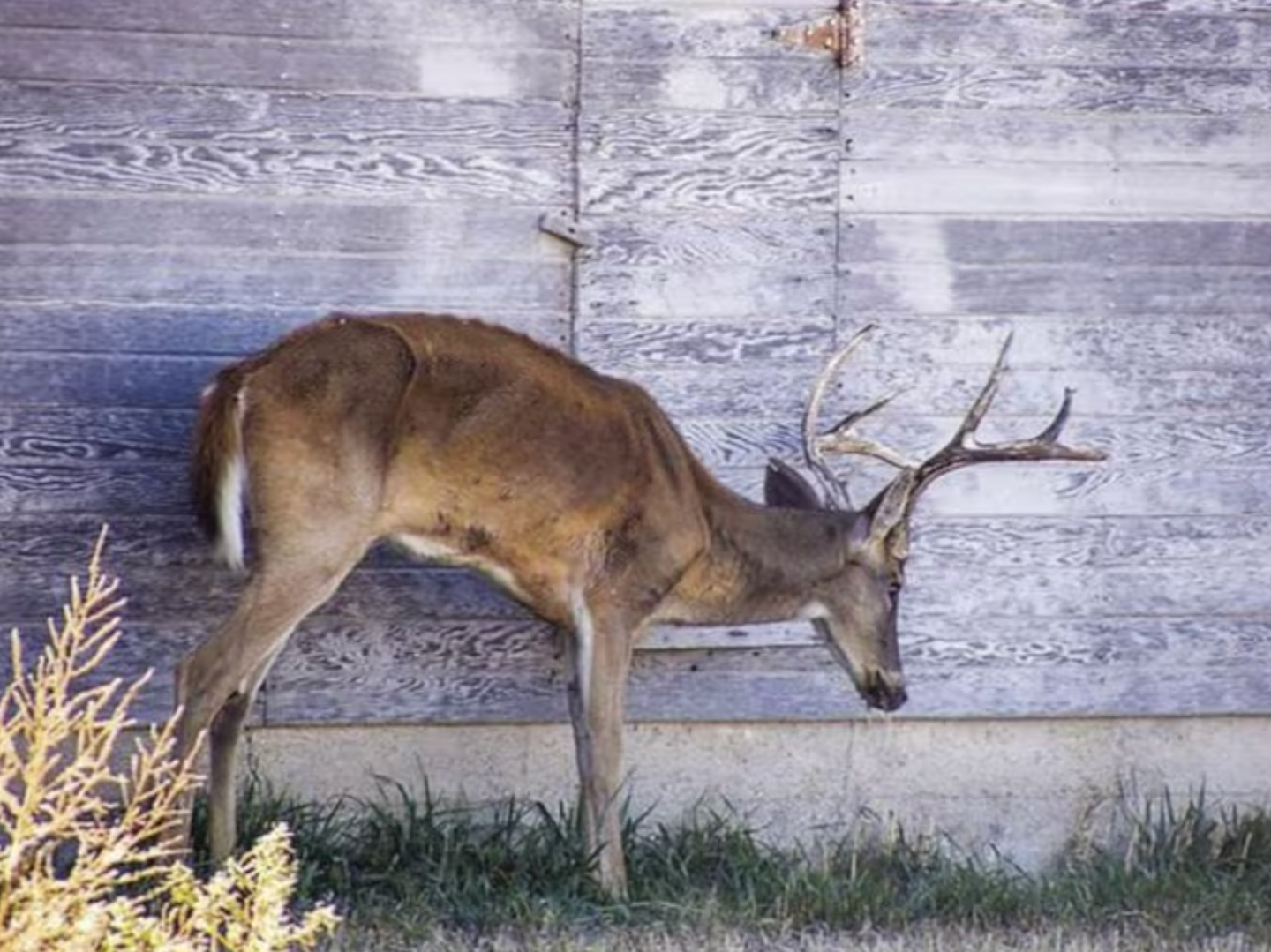Study Suggests Possible Link Between CWD and Fatal Human Disease—But with Many Open Questions

This file photo from the Kansas Department of Wildlife and Parks shows whitetail buck racked with Chronic Wasting Disease at a research facility in the Sunflower State. Kansas Department of Parks and Wildlife
No matter where you stand on the CWD debate—whether you think it’s the most important deer-related issue of our time or more than a little overblown—what’s long been a constant, and a comforting constant at that, is the fact that the disease has never been shown to “jump” from deer to humans. It’s also why this report, “Two Hunters from the Same Lodge Afflicted with Sporadic CJD: Is Chronic Wasting Disease to Blame?” from the American Academy of Neurology seems potentially alarming. But let’s slow down a bit.
While no human has ever contracted CWD, we are susceptible to a similar ailment called Creutzfeldt-Jakob disease (CJD). CJD is frequently called “mad cow disease,” but that one (Bovine spongiform encephalopathy) is actually not related, according to the CDC. All three diseases—CWD, CJD, and Mad Cow, along with scrapie in sheep, are caused by misshapen proteins called prions, which are neither bacterium or virus. And they are all eventually fatal via a pretty nasty death, but also pretty rare. CJD, for example, occurs in about one in a million people.
Still, succumbing to a brain-eating prion is a bad way to go, and every hunter should have the good sense not to eat a game animal that looks sick. Hunters in known CWD areas are also strongly advised to get their deer tested, and discard the venison if tests positive for CWD.
Yet, if there were ever proof of a human contracting CWD from eating contaminated venison, the ramifications to deer hunting would obviously be catastrophic, and it would change the conversations and procedures around CWD management in a big way. Both are reasons why this new study is something F&S should report on—but with a careful and critical eye.
The Fine Print
The study’s objective reads: “This study presents a cluster of Creutzfeldt-Jakob disease (CJD) cases after exposure to chronic wasting disease (CWD)-infected deer, suggestive of potential prion transmission from CWD-infected deer to humans.”
The “cluster,” from what I understand, is two people. And the study is based on an unnamed 72-year-old man who had a “history of consuming meat from a CWD-infected deer population… His friend, who had also eaten venison from the same deer population, recently died of CJD, raising concerns about a potential link between CWD and human prion disease.”
The study doesn’t say where this deer population was or what the CWD prevalence rate was in it. Some counties in southern Wisconsin have CWD prevalence rates as high as 28% in tested deer, but the rate is much lower than that elsewhere, and the definition for a CWD infected area can be pretty broad.
The point is, the study does not establish that the men ate infected venison or not. Maybe the researchers know beyond a doubt that they had their venison tested, that it came back positive, and they ate it anyway—but if they did, wouldn’t the study say so?
The findings also makes it clear that “Due to the challenge of distinguishing sCJDMM1 from CWD without detailed prion protein characterization, it is not possible to definitively rule out CWD in these cases.” Well, just because they can’t rule out CWD certainly doesn’t make CWD the culprit.
Bottom Line: Not Much News Here
Like so many studies that are perfectly valid and worth reading, but then later twisted to make a better headline, this one actually concludes with a fair bit of nothing: “Clusters of sporadic CJD cases may occur in regions with CWD-confirmed deer populations, hinting at potential cross-species prion transmission. Surveillance and further research are essential to better understand this possible association.” That’s pretty much what’s always been said about CWD, all the qualifiers including.
When considering how freaked out you should be about this, it’s worth taking into context the largest CJD scare in history, too, which was the outbreak of mad cow disease in the United Kingdom in the late 1980s and 1990s. During that, which went on for years, 178 people were believed to have contracted a CJD variant from eating contaminated beef. That’s out of a population of about 60 million people. In response to the panic, 4.5 million cattle were slaughtered and discarded. It’s worth noting that those feedlot cattle were fed a diet supplemented by protein meal made from the bones of other slaughtered cattle. Yeah, forced cannibalism seems like a good way to get sick, and it’s probably a good thing they stopped it.
Meanwhile, I’ll take this new study with a large grain of salt—which I may well use on my next steaks of wild, clover-fed venison.
The post Study Suggests Possible Link Between CWD and Fatal Human Disease—But with Many Open Questions appeared first on Field & Stream.
Articles may contain affiliate links which enable us to share in the revenue of any purchases made.
